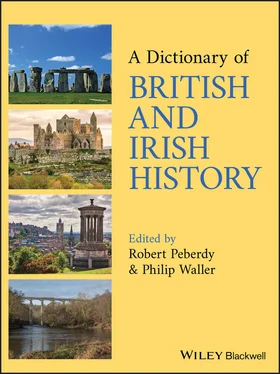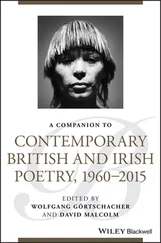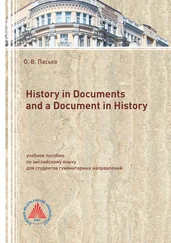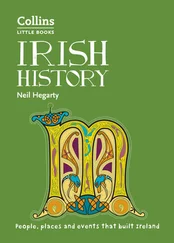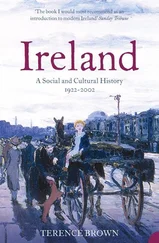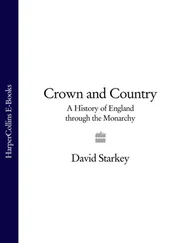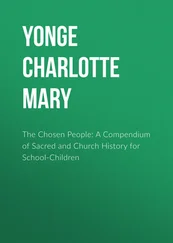Bute’s ministry declared war on Spain (Jan. 1762), and negotiated the Peace of PARIS, ending the SEVEN YEARS WAR (Feb. 1763). Bute then removed the surviving ministers from Newcastle’s administration. But he encountered resistance with a proposed CIDER TAX (1763). He was mercilessly satirized, especially by John WILKES. Worn down, he resigned in April 1763 (succeeded by George GRENVILLE).
The ROCKINGHAM WHIGS claimed that Bute’s ‘secret influence’ undermined later ministries, but by 1765 he was politically inactive. See also BUTE FAMILY; PITT, WILLIAM, THE ELDER.
BUTE, 2ND MARQUESS OF(b. 10 Aug. 1793 at Dumfries House, Ayrshire, Scotland; d. 18 March 1848 at Cardiff, Glamorgan, Wales, aged 54). A great‐grandson of the 3rd earl of BUTE, John Crichton Stuart inherited his grandfather's title and widespread estates in 1814, including CARDIFF and much of the S Wales coalfield. He built Cardiff's first substantial dock (opened 1839), inaugurating development that eventually resulted in Cardiff becoming the world's chief coal‐exporting port. See also BUTE FAMILY; COAL INDUSTRY, WALES. BUTE FAMILY
A Scottish noble family (a branch of the Stewart family, descended from an illegitimate son of King ROBERT II); important in Great Britain in 18th–20th centuries. Members include the prime minister in 1762–3 ( see BUTE, 3RD EARL OF).
In 1766 John Stuart (1744–1814), the 3rd earl's son and heir, married the heiress of the CARDIFF Castle estate (Glamorgan, Wales) and in 1796 was created marquess of Bute. His grandson and heir, John Crichton Stuart (1793–1848), invested heavily in Cardiff ( see BUTE, 2ND MARQUESS OF). John Patrick Crichton Stuart (1847–1900), the 3rd marquess, considerably rebuilt Cardiff Castle, which was presented to Cardiff in 1947 by John Crichton Stuart (1907–56), the 5th marquess.
BUTLER, JOSEPHINE(b. 13 April 1828 at Glendale, Northumberland, England; d. 30 Dec. 1906 at Wooler, Northumberland, aged 78). From a landed background, Butler in the 1850s–60s helped poor women in OXFORD, Cheltenham and LIVERPOOL, and from the late 1860s campaigned for women’s rights (e.g., education, property ownership). Convinced that the INDUSTRIAL REVOLUTION had disadvantaged women economically, she pressed reforming ideas in about 90 books and pamphlets. From 1869 she was a leading campaigner against the CONTAGIOUS DISEASES ACTS (repealed 1886) and female prostitution although she was critical of the coercive approach of the PURITY MOVEMENT. BUTLER, ‘RAB’
(b. 9 Dec. 1902 at Attock Serai, Punjab, India; d. 8 March 1982 at Great Yeldham, Essex, England, aged 79). Richard Austen Butler (known as ‘Rab’) was a Conservative MP 1929–65, a minister in the British NATIONAL GOVERNMENT from 1931, and education minister (1941–5) in the wartime coalition. His name became associated with the 1944 Act that expanded secondary education ( see BUTLER EDUCATION ACT).
After the war Butler led the Conservatives in adopting full employment and social security as central policies. The congruence with Labour was nicknamed ‘BUTSKELLISM’. Butler became a central figure in Conservative governments. His offices included chancellor of the Exchequer (1951–5), lord PRIVY SEAL (1955–7), home secretary (1957–62) and foreign secretary (1963–4). Butler failed to obtain the Party leadership in 1957 and 1963. He was created Lord Butler in 1965. See also EDEN, ANTHONY; MACMILLAN, HAROLD.
BUTLER EDUCATION ACTPopular name for the Education Act of 1944, promoted by R.A. BUTLER, president of the Board of Education, and passed by the UK Parliament for England and Wales. It divided public education into primary, secondary and further, and required education authorities to plan and provide separate secondary schools for children of all abilities. The leaving age would be raised to 15 and later 16. Other provisions included school meals and free milk. Most authorities instituted ‘multilateral’ secondary education based on selection (usually at age 11) for GRAMMAR, ‘modern’ and sometimes technical schools (as recommended by the ‘Spens Report’ of 1939) although a few pursued COMPREHENSIVE EDUCATION. See also EDUCATION, ENGLAND/WALES. BUTLER FAMILY, IRELAND
An Anglo‐Irish noble family. Its members were descended from Theobald Walter (d. 1205), who went to Ireland with Prince JOHN (1185), was given lands, and was appointed chief butler (by 1192). The post became hereditary and the family adopted the surname Butler.
In 1328 James, 7th butler ( c .1305–38), was created earl of Ormond. He and his successors were dominant in E MUNSTER (S Ireland), and were rivalled in Ireland until the 16th century by only the ‘Geraldine' earls of KILDARE and DESMOND ( see BUTLER–GERALDINE FEUD). James Butler (1390–1452, 4th earl from 1405) feuded with the Talbot family ( see TALBOT–ORMOND FEUD). The 5th, 6th and 7th earls lived mainly in England (1450s–1515). Butler influence in Ireland was revived by the 7th earl's cousin Piers Butler ( c .1467–1539, 8th earl from 1515), who served as chief governor (lord deputy) 1522–4.
James Butler (1610–88) dominated Ireland in the 1640s and 1670s–80s and was created duke of Ormond in 1661 ( see ORMOND, 12TH EARL OF). His grandson and successor James Butler (1665–1745) supported King WILLIAM III and Queen ANNE, but became a Jacobite in 1715, after George I's accession, and fled abroad (Irish estates forfeited 1716). In 1721 his brother Charles Butler (1671–1758) was permitted to buy the estates and succeed as 3rd duke. He died without direct heir. The earldom of Ormond descended in another line into the 21st century. See also KILKENNY.
BUTLER–GERALDINE FEUDIn Ireland, feuding between the BUTLER FAMILY (led by the earls of Ormond) and the GERALDINES (led by the earls of Kildare and Desmond) which frequently disrupted Anglo‐Irish political life between the 1450s and 1560s. During the YORKIST–LANCASTRIAN CONFLICT in England (1450–90s), Butlers sympathized or allied with Lancastrians, Geraldines with Yorkists. In 1522–4 Geraldines undermined the 8th earl of Ormond's governorship. In the 1560s inter‐party rivalry contributed to the First DESMOND REBELLION. See also KILDARE ASCENDANCY. BUTSKELLISMTerm denoting the consensus between leading members of the British LABOUR and CONSERVATIVE PARTIES in the 1950s in accepting the mixed economy (nationalized and private industry), WELFARE STATE and Keynesian economics (see KEYNES, J.M.). Formed from the names of ‘Rab’ BUTLER (Conservative) and Hugh GAITSKELL (Labour), the word first appeared in The Economist on 13 Feb. 1954. BUTT, ISAAC
(b. 6 Sept. 1813 at Glenfin, Co. Donegal, Ireland; d. 5 May 1879 near Dundrum, Co. Dublin, Ireland, aged 65). A (Protestant) economist and lawyer, Butt long supported the UNION OF IRELAND AND GREAT BRITAIN but was shocked by the British government's weak response to the GREAT FAMINE (1845–9). From 1852 to 1865, as a member of the UK Parliament (Conservative, then Liberal), he attempted unavailingly to reform landholding in Ireland. He also defended participants in the RISING OF 1848 and INSURRECTION OF 1867.
These experiences led Butt to promote ‘Home Rule' (a separate Irish Parliament); in 1870 he founded the federalist HOME GOVERNMENT ASSOCIATION (superseded by the HOME RULE LEAGUE, 1873). He was re‐elected to Parliament in 1871, but from 1875 was overshadowed by C.S. PARNELL. See also HOME RULE MOVEMENT, IRELAND.
BYNG, JOHN
(b. Oct. 1704 at Southill, Bedfordshire, England; d. 14 March 1757 at Portsmouth, Hampshire, England, aged 52). A sailor from 1718, Byng held numerous British naval commands. In 1756, early in the SEVEN YEARS WAR, he was sent as commander with a fleet to defend MINORCA (W Mediterranean). After discovering that French troops had landed, and encountering a French fleet, he withdrew to GIBRALTAR. The British garrison on Minorca surrendered (June).
Читать дальше
